According to preliminary official estimates, wheat cultivation in Pakistan has reached a record area of two crore 38 lakh 28 thousand 271 acres this year. However, it was cultivated on 2 crore 27 lakh 92 thousand 690 acres of land in 2015-16.
At present, the area under wheat cultivation is 10 lakh 35 thousand 581 acres more than it was in 2015-16 and about 15 lakh acres more than last year i.e. 2022-23.
Now, 73 percent of wheat cultivated area in the country is in Punjab, and this is the first time when it was sown on an area of 1 crore 74 lakh 43 thousand acres, which is 14 lakh 29 thousand acres more than last year. The former highest wheat cultivation was seen in 2015-16 in Punjab.
This year, a new record of wheat cultivation has been made in Sindh province on an area of 31 lakh 37 thousand acres. Khyber Pakhtunkhwa has cultivated 19 lakh 24 thousand 787 acres while this area is 13 lakh 23 thousand 584 acres in Balochistan.
Why did cultivation expand?
Dr Javed Akram, Director of Wheat Research Institute of Ayub Agricultural Research Institute, declares that the wheat production was sound last year. Moreover, the farmers got good compensation because of the improvement in the official cost.
Last year, the federal government increased the subsidized price of wheat from two thousand two hundred to three thousand nine hundred.
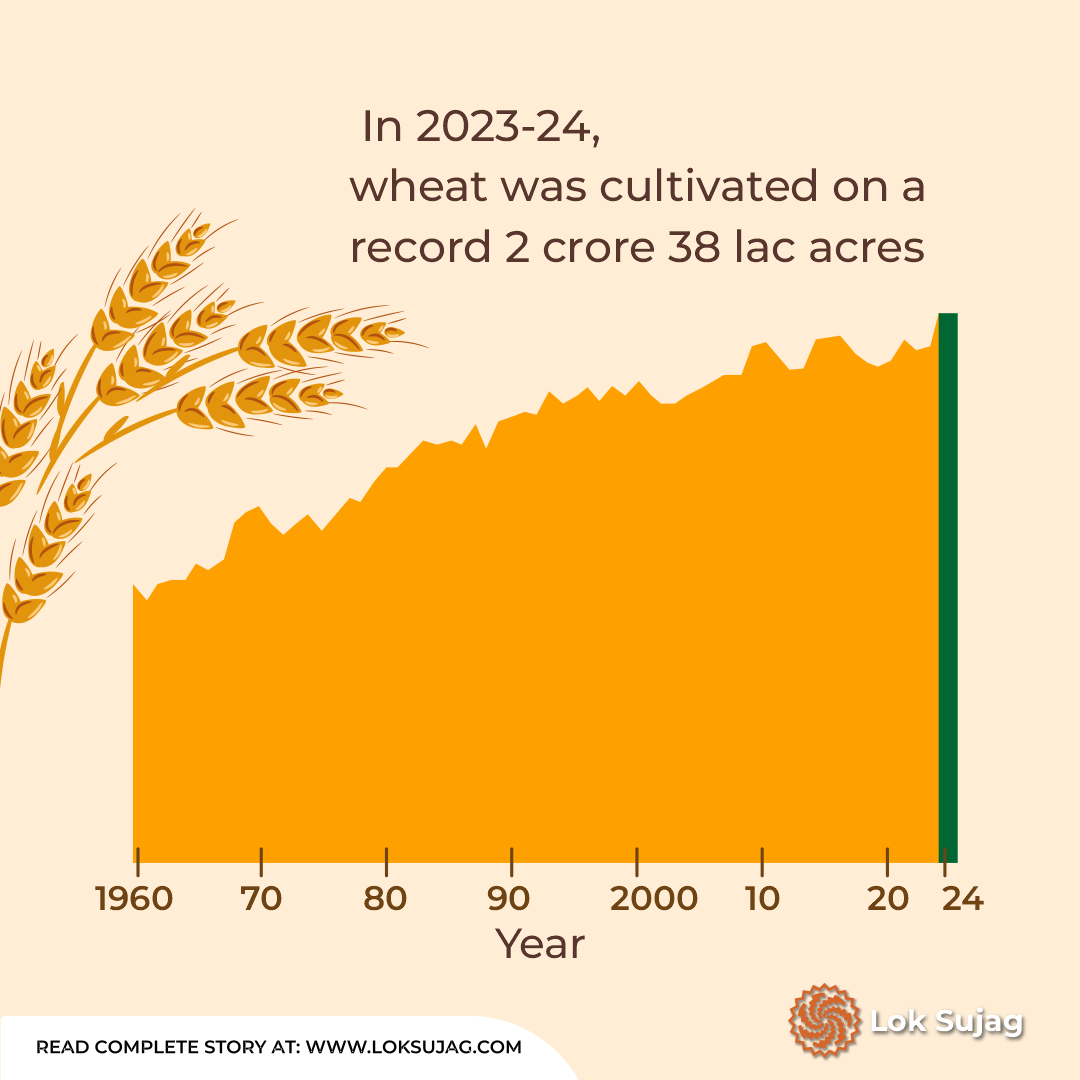
He mentions that the low subsidized price of wheat in previous years led farmers to grow mustard, potato and maize. Last year, mustard was cultivated on a large scale, but unfavourable weather affected its production which caused difficulties in sales.
Similarly, the rates of maize fell drastically, causing losses to the farmers. Therefore, the cultivation of mustard and maize has declined this year and has been replaced by wheat.
This year, the cultivation of mustard in Punjab has reduced by 43 percent compared to last year. Only six hundred and five thousand acres have been used for mustard crops, which is around four and a half lakh acres less than last year. Similarly, canola cultivation has also decreased by 50 percent with only 92 thousand acres being used for the crop this year in comparison to the previous year. This information is according to the data from the Punjab Crop Reporting Service.
Chaudhary Umair Masood, central president of the farmers' organization “Pakistan Kissan Ittehad”, also credits the 'better government rate' (support price) for the higher wheat production.
He informs that like maize, mustard was grown on a large scale last year but its selling became a challenging task. The caretaker government, along with the feed industry, allowed offloading of all the containers of soybeans at the Karachi port, which brought down the prices of maize in the country.
How much will the country benefit from more cultivation?
Each family in Pakistan (average 6.30 individuals per family) requires 19.5 maunds of wheat to meet its annual need. This calculation estimates the requirement of nearly two crore 97 million metric tons of wheat for 24 crore 15 lakh people.
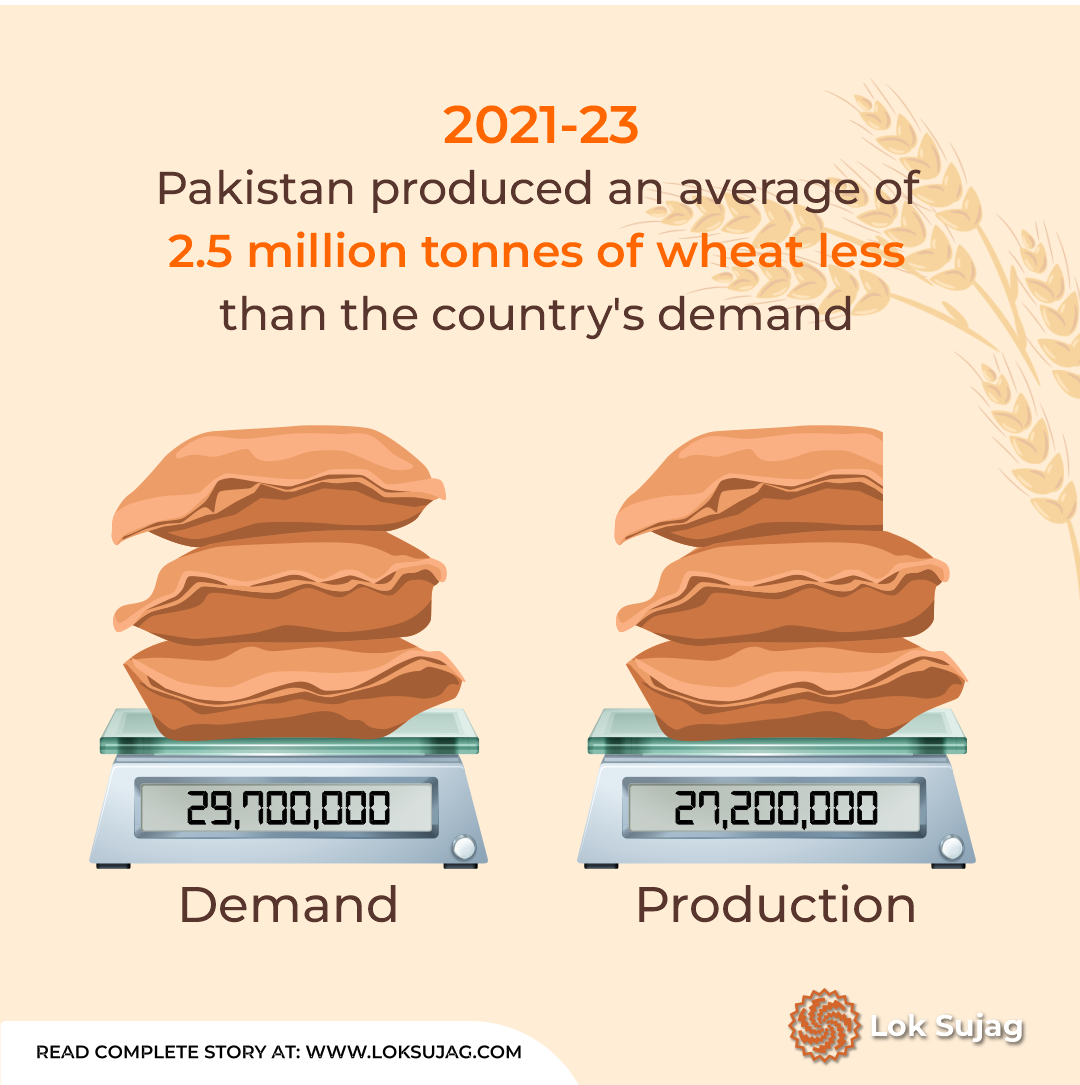
During the last three years, Pakistan has been growing about two crores 72 lakh metric tons of wheat from the cultivation area of two crores 24 lakh 4 thousand acres annually. However, this falls short of the country’s requirement by approximately 25 lakh metric tons.
Looking at the average production of the last three years which was 30.3 maunds per acre, the production of wheat is expected to be two crore 89 lakh metric tons this year.
If the weather conditions during March and April remain favourable and the average crop yield per acre reaches 30.93 maunds, similar to last year's yield, then this year's total production may reach up to 2 crore 94 lakh 81 thousand metric tons. This is just three lakh metric tons less than the national requirement for the entire year.
Dr Imtiaz Ahmed Gopang, Wheat Commissioner of the Ministry of National Food Security and Research, is optimistic that Pakistan will achieve record production of wheat this year, in case the weather remains favourable. Considering the cultivated area, the government has currently set a production target of 30 million metric tons.
He expresses that the average yield per acre in Punjab was 33 maunds last year, whereas, this amount has been 38 maunds in past years. However, now climate change is adversely affecting crops.
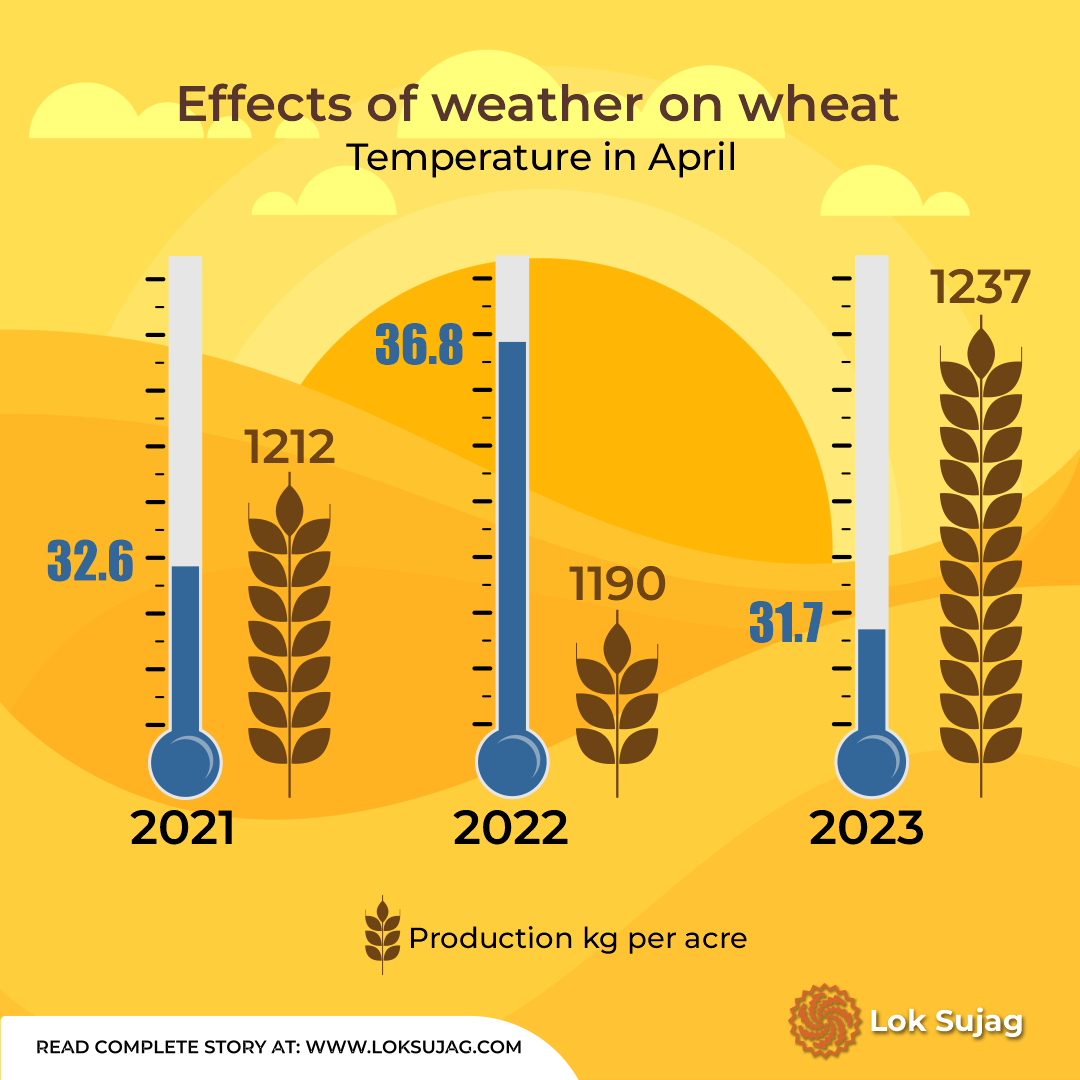
According to him, this year has faced many fertilizer crises as well as less rain. Similarly, the weather was dry for about 30 days in December and January, which has led to "rust" on the crop in Faisalabad and Gujranwala. These factors are immensely affecting the production of crops.
Another reason for the decline in wheat yields in Punjab was a decrease in its cultivation in the better-producing areas for a few years. However, the wheat cultivated area in the Sahiwal division has currently increased by 21 percent, in Multan by 14 percent and in Faisalabad by 11 percent. In these three divisions, wheat has been cultivated on an area of about seven lakh acres more than last year.
The official records represent that the wheat cultivated area has increased by 12 percent in the Bahawalpur division and 8 percent in DG Khan this year.
Dr Akram claims that if the temperature stays below 30 degrees Celsius in March and 35 degrees Celsius in April, and there are no unusual rains or hailstorms, Punjab can produce an average of more than 36 maund.
The data of the Meteorological Department also reveals that wheat production improved in the year when March and April were cooler in the country. In March 2021, the average wheat production was 30.31 maunds when the temperature was 2.91 degrees Celsius higher than the average national temperature. Whereas, the temperature rise in April was 0.76 degrees Celsius.
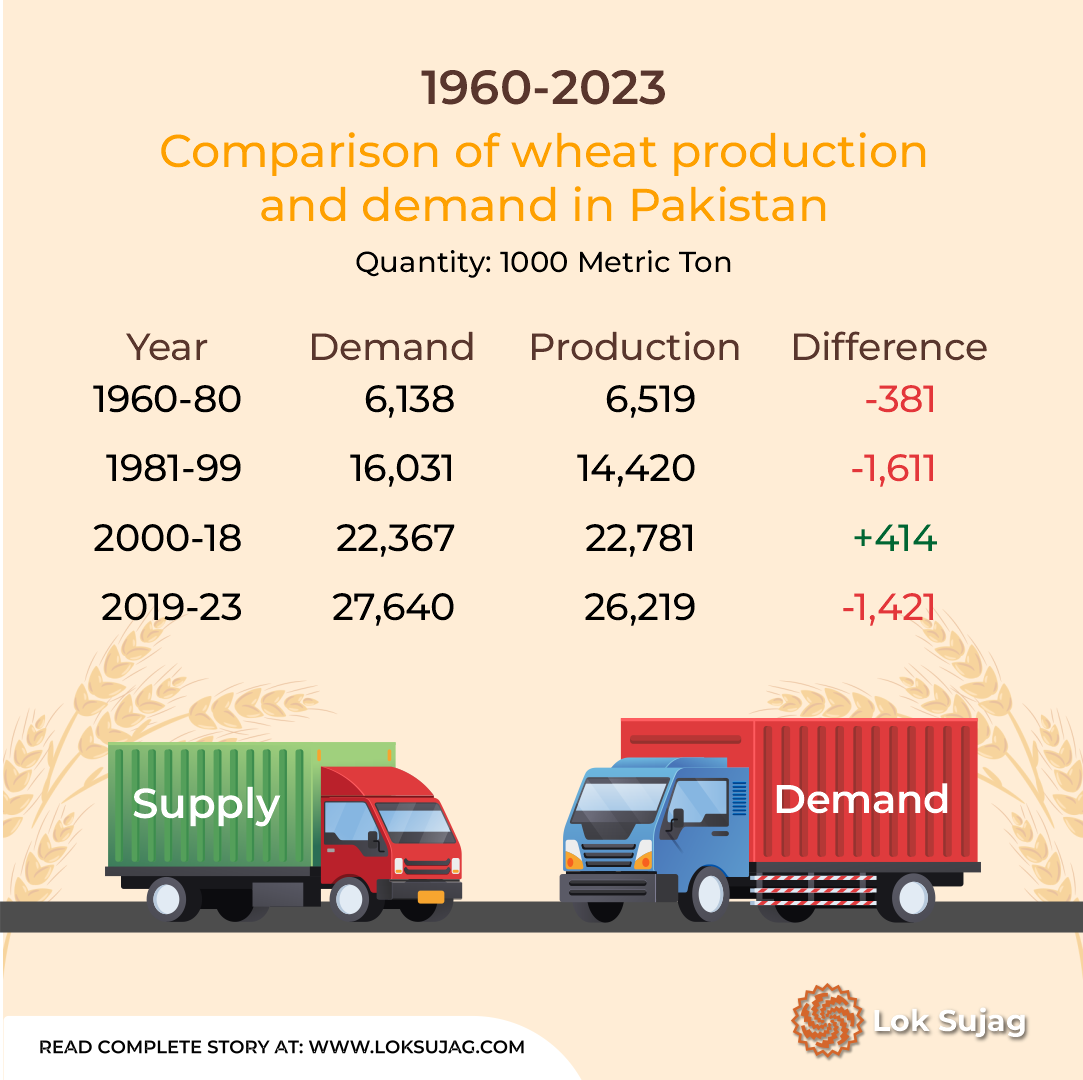
The temperature in 2022 was recorded above average at 5.01 degrees Celsius in March and at 5.02 degrees Celsius in April, reducing the average wheat yield by at least one maund per acre this year. This is the same year when Pakistan experienced the hottest March and April months since 1961 and the average yield that year was 29.75 maunds per acre.
Last year in March 2023, the temperature was 1.57 degrees Celsius above normal. However, in April, it was 0.12 Celsius below normal, so the average production was recorded at 30.93 maund per acre.
Dr Javed expresses that although the rains caused significant damage in 2023, but was suppressed by the benefits of the cold weather. Consequently, the country had a record production of more than two crore 76 lakh metric tons.
Overproduction of wheat: Another concern
The Kissan Ittehad’s president Umair Masood is hopeful that a new record of wheat production will be set this year. At the same time, he is also worried about its negative consequences on farmers.
He reveals that the farmers were forced to sell the crop at low costs whenever there was wheat production more than what the country needed. He believes that the government is serious about procurement only when it feels that the production is less than the requirement which can result in a flour crisis in the country.
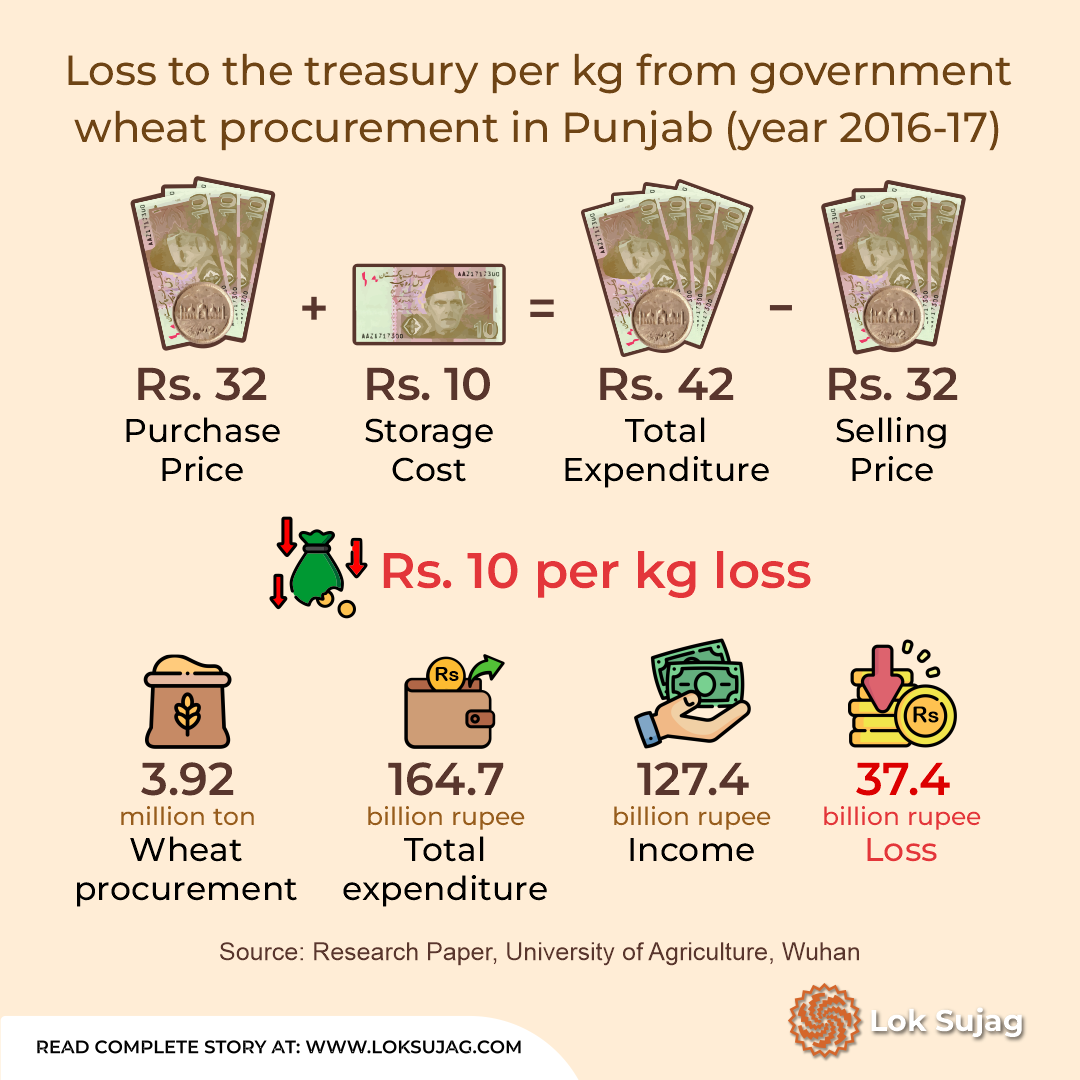
Illustrating an example of 2017 and 2019, he reveals that although there was more yield, but no buyer for wheat. At that time, private buyers vanished as the wheat price in the world market was lower than that of Pakistan. Moreover, the government failed to provide Bardana.
From 2000 to 2018, Pakistan was self-sufficient in wheat production and exported an average of 10 lakh metric tons of wheat annually. However, this self-sufficiency could not be sustained.
From 2020 to 2023, Pakistan had to import about 27 lakh metric tons of wheat annually to meet its requirements. Eventually, a lot of foreign exchange was also expended because of the rise in the dollar.
In the current financial year, 19 lakh 80 thousand 183 metric tons of wheat were imported from July to January 2024, which cost 162 billion 56 crore 50 lakh rupees.
Umair Masood mentioned that recently during the cultivation of the crop, there were rumors that the government was fixing the price of wheat at four and a half thousand rupees. This caused the farmers to be inclined to grow more wheat.
Media reports suggest that a proposal was made in early January to increase the support price of wheat. However, the proposal was rejected by the Economic Coordination Committee of the Cabinet. As a result, the price from last year, which was thirty-nine hundred rupees, has been maintained.
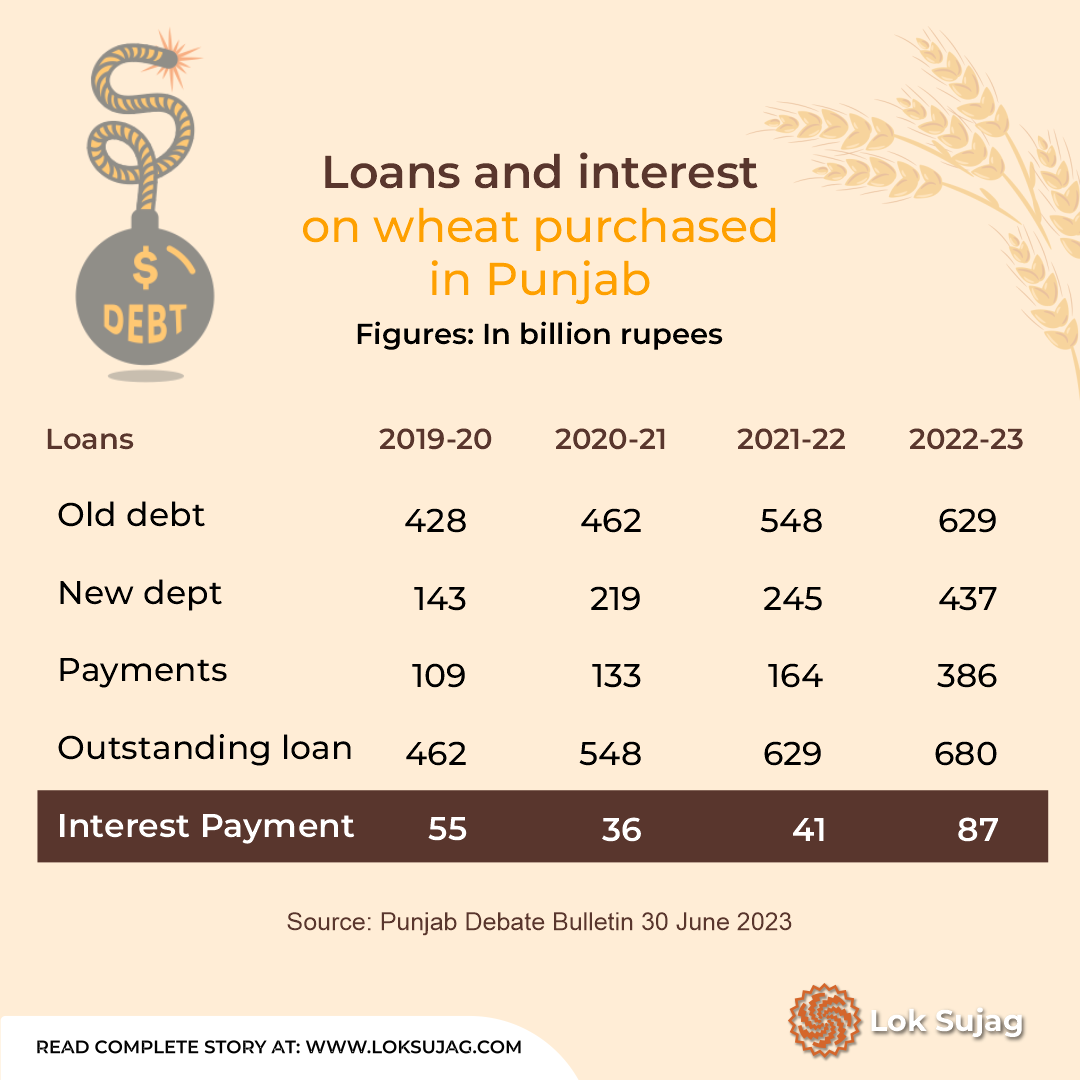
President Kissan Ittihad reports that farmers are worried about rumours of a reduction in the official wheat price as the crop is about to be ready. This is causing the decline of wheat costs in the open market.
The data of the National Institute of Statistics shows that the average price of flour in the country’s open market was five thousand 636 rupees in July 2023. In February 2024, the average price per maund has reached five thousand two rupees.
The Wheat prices are facing a decline in the universal market including Pakistan. Pakistan’s wheat import in the current financial year is about thirty-three hundred rupees, while the aid in the country is more than six hundred rupees.
Subsidy on wheat through loans
Wheat is a staple food in Pakistan and its consumption is crucial for food security. The government has faced political crises in the past due to flour shortages.
It has been the priority of every government to meet the flour needs to avoid political instability in the country. For this, the government not only buys on its own but also announces a support price to encourage farmers to grow more of this crop. Further, it spends billions of rupees on subsidies to provide cheap flour to the public.
A research paper published in 2019 by scholars in China's Huazhong University of Agriculture in Wuhan stated that the burden of large-scale procurement of wheat on the Pakistani government is very high.
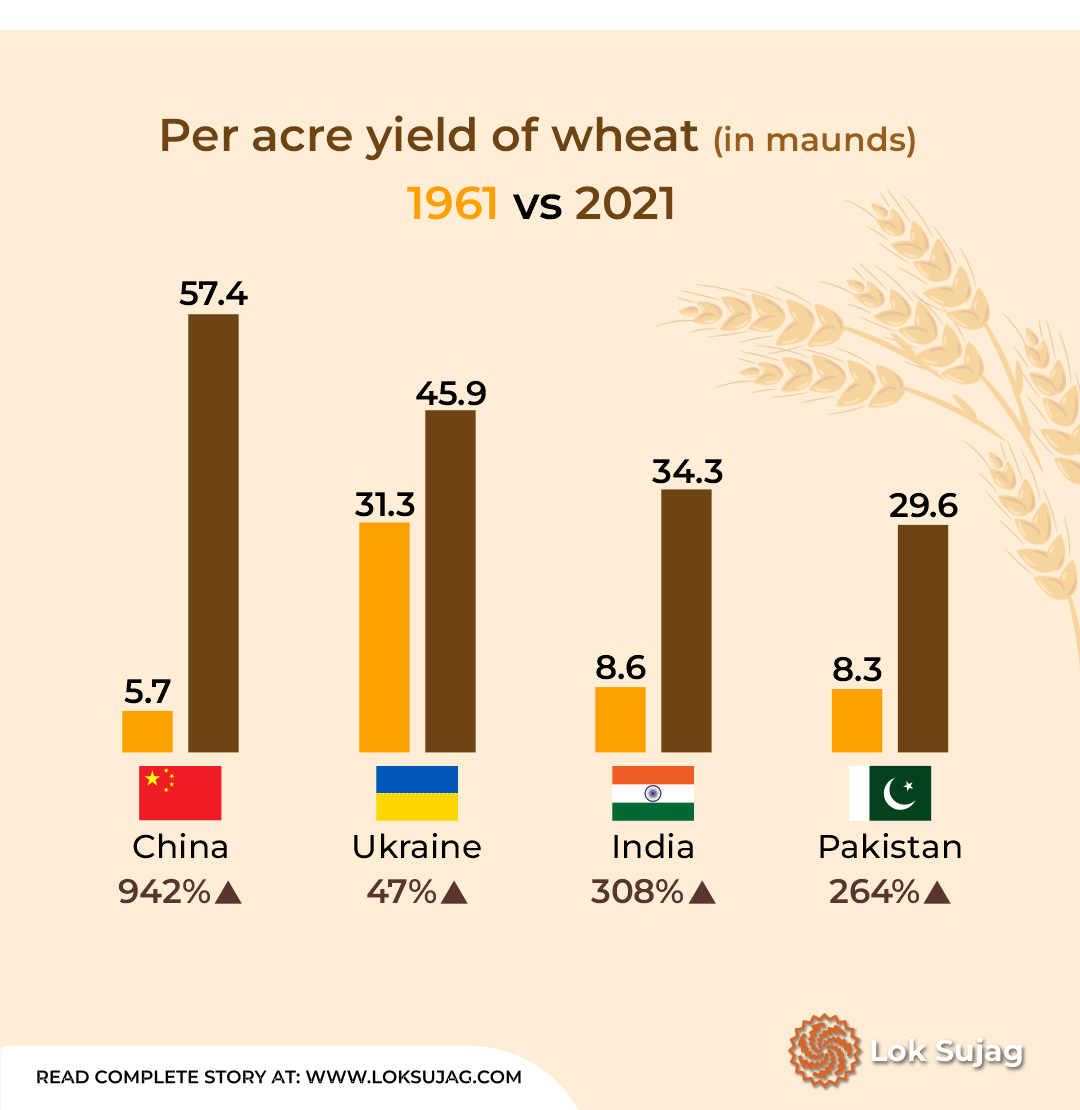
According to the government reports included in the research, the Punjab government bought 39 lakh 20 thousand metric tons of wheat in 2016-17, which cost 164 billion 68 crore rupees. Then the same amount was sold for 127 billion 40 crore rupees.
Thus, the provincial government had to pay 37 billion 36 crore rupees for the purchase and maintenance of wheat in a single year.
According to the columnist, the government bought wheat from the farmers at Rs 32.5 per kg and sold it to the flour mills at the same price after about a year. However, the expenditure of Rs 9.5 per kg for its collection and handling had to be paid by the government.
This research demonstrates that the deficit of one kilogram had indebted the Punjab government to the tune of 245 billion rupees by 2017. Moreover, this debt continues to increase and the Punjab government is paying billions of rupees to the banks every year for the interest only.
According to the June 2023 report of the Punjab Ministry of Finance's Debt Management Unit, the debt had increased from 462 billion rupees in June 2020 to 680 billion rupees in June 2023. However, during these years, the government also repaid 143 billion, 219 billion, 245 billion, and 437 billion rupees respectively.
According to the same report, the Punjab government has paid 55 billion rupees to the banks in 2020, 36 billion rupees in 2021, 41 billion rupees in 2022 and 87 billion rupees in 2023.
Also Read
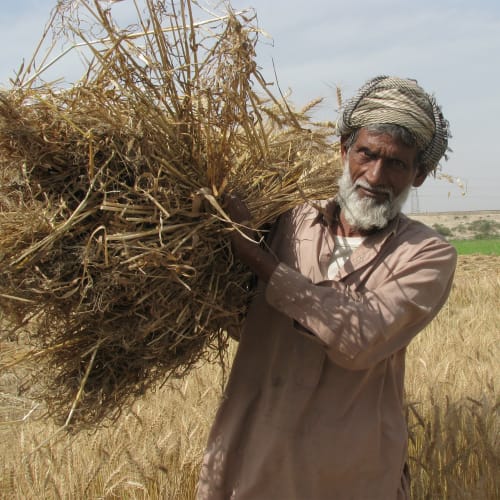
Manipulating the wheat market: 'Private traders are buying the crop for holding and smuggling'.
Dr Imtiaz Ahmed Gopang, the Vet Commissioner of the Ministry of National Food Security and Research, does not support government intervention in the marketing of wheat. According to him, the government should gradually withdraw from the wheat market. He recommended that the provincial governments of Punjab and Sindh, as well as the Pakistan Agricultural Storage and Services Corporation Limited (PASCO), should purchase 5 lakh metric tons of wheat for strategic reserves, while the remaining market should be left open.
He believes that the practice of creating market distortions should be stopped. Governments are responsible for creating these distortions through measures like Section 144, de-zoning, and announcements from mosques, which create fear in the market. As a result, neither traders nor flour millers can purchase from it.
"When farmers don't receive a higher price, governments exit procurement."
He offers the example of rice, which Pakistan produces 50-60 percent more than it needs. He believes that the farmers are benefiting from the lack of government intervention in the purchase of paddy.
Agriculture Department (Extension) Punjab Director, General Anjum Ali Buttar disagrees with Imtiaz Gopang.
He says that out of the four provinces of the country, Gilgit-Baltistan and Azad Kashmir, only Punjab produces surplus wheat while Sindh is meeting its requirement. Millions of people in the remaining two provinces, Gilgit and Azad Kashmir rely on Punjab.
He believes that if the Punjab government ceases the purchase of wheat, the traders will hoard the wheat and sell it at a higher price. This could result in a shortage of wheat in households, which could have severe consequences. While one can live without sugar, onions, or tomatoes, the same cannot be said about flour. A family not having flour for even one day could lead to dire circumstances.
Published on 12 Mar 2024



















